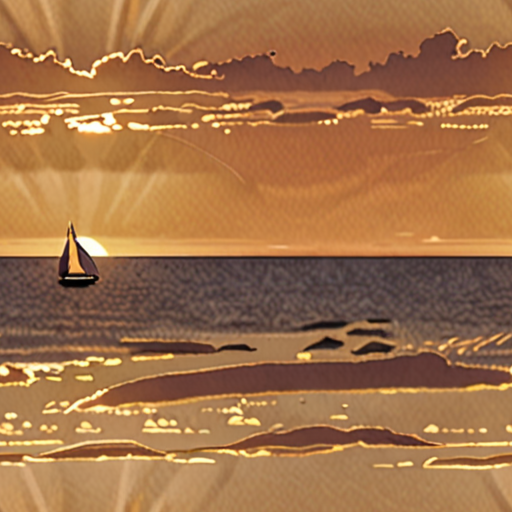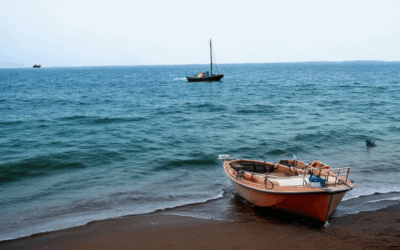Traveling by sea offers a unique perspective on the world, blending adventure with the beauty of nature. For those who love capturing the essence of their journeys through the lens, sailing travel photography emerges as a captivating art form. Combining the freedom of the open ocean with the storytelling power of photography, this niche allows enthusiasts to document their voyages in a way that truly brings the experience to life. Whether you’re an amateur looking to improve your skills or a professional seeking new challenges, mastering sailing travel photography can elevate your craft and leave a lasting impression on anyone who views your work.

How to Take Pictures of Sailing
Capturing the essence of sailing requires a blend of technique, creativity, and patience. Whether you’re aboard a yacht, a sailboat, or simply observing from shore, here are expert tips to help you take stunning sailing photographs.
- Choose the Right Equipment: A high-quality camera with a fast shutter speed (preferably 1/2000s or faster) is essential for capturing smooth motion. A telephoto lens is great for distant subjects, while a wide-angle lens excels at capturing vast landscapes and dynamic compositions.
- Master Shutter Speed and ISO: Adjust your shutter speed to freeze action moments, such as the spray from the sails or the movement of the rigging. Use a higher ISO to compensate for low light conditions, ensuring sharpness without graininess.
- Experiment with Angles: Capture unique perspectives by shooting from deck level, looking up at the mast, or down towards the horizon. Experiment with angles to emphasize the scale and grandeur of the vessel.
- Use Filters and Lighting: Neutral density (ND) filters can help balance harsh sunlight, while graduated neutral density (GND) filters are ideal for preserving detail in shadows and preventing overexposure. Shoot during golden hour for soft, warm lighting that enhances textures.
- Focus on Composition: Frame your shots to highlight the subject—whether it’s the bow cutting through waves, the crew in action, or the sunset painting the sky. Consider leading lines and the rule of thirds to create balanced and engaging images.
- Capture the Motion: While static shots are beautiful, dynamic images often tell a story. Use fast shutter speeds to freeze the motion of sails or capture the spray flying off the bow.
- Edit Thoughtfully: Post-process your photos to enhance color, contrast, and clarity. Remove unwanted distractions and adjust exposure to bring out details. Software like Adobe Lightroom or Capture One offers powerful tools for refining your images.
Ready to elevate your sailing photography? Explore Sailing Photo Awards to discover inspiring galleries, tips, and communities dedicated to maritime photography.
Join communities like Sailing Photo Awards to share your work, learn from experts, and connect with fellow photography enthusiasts passionate about sailing.
The Best Lens for Sailing Photography
For sailing photography, the ideal lens depends on the type of shot you’re aiming for, but a telephoto lens is often recommended due to its ability to capture distant subjects with clarity. Here are our top recommendations:1. **Telephoto Lens (70-200mm or 70-300mm)** – These lenses are excellent for shooting sailboats from a distance, allowing you to zoom in on details like the rigging, sails, or the boat itself. – A 70-200mm lens is versatile and lightweight, making it a great choice for travel and sailing photography. – The 70-300mm lens offers a slightly longer reach, which can be beneficial if the subject is farther away or if you want more flexibility in framing. 2. **Wide-Angle Lens** – For capturing the vast expanse of the ocean and the boat’s relationship with the environment, a wide-angle lens like the 24mm or 28mm can provide a broader perspective. – This is particularly useful when you want to emphasize the scale and grandeur of the scene. 3. **FishEye Lens (Optional)** – If you’re experimenting with unique perspectives, a fish-eye lens can create dramatic effects by bending the image around the edges, adding a surreal touch to your shots. ### Tips for Sailing Photography: – **Composition**: Look for leading lines (like the mast of the boat) to guide the viewer’s eye through the frame. – **Rule of Thirds**: Position the boat or key elements within the frame to create a balanced composition. – **Shutter Speed**: Use a fast shutter speed when the boat is moving to freeze the motion and capture sharp moments. – **Tripod and Remote Trigger**: Stability is crucial, so always use a tripod and consider a remote trigger to minimize movement blur. For more sailing photography tips and inspiration, explore the [Sailing Photo Awards](https://sailingphotoawards.com/) gallery and learn from professional photographers who specialize in marine imagery.
Don’ts of Travel Photography
Travel photography requires careful planning and execution to capture the essence of a destination. Here are some common mistakes to avoid:
- Don’t Forget Preparation: Research the location beforehand, plan your shots, and pack essential gear like a camera, lenses, tripod, and batteries. Proper preparation ensures you’re ready to capture meaningful moments.
- Don’t Neglect Composition: Pay attention to framing, leading lines, and the rule of thirds to create balanced and visually appealing shots. A well-composed image can make all the difference.
- Don’t Ignore Lighting: Light is critical. Look for natural light during the golden hour and be prepared to adapt to challenging conditions like overcast skies or backlighting.
- Don’t Rush the Moment: Patience is key. Wait for the perfect moment when the subject is engaged, the light is ideal, and the scene feels authentic. Rushing often leads to disappointing results.
- Don’t Overlook Post-Processing: Edit your photos to enhance color, contrast, and clarity. A good edit can transform a decent shot into a great one, but avoid over-processing to keep the natural feel intact.

Is Travel Photography Profitable?
Yes, travel photography can be a profitable venture, but it requires dedication, skill, and strategic planning. Here’s a breakdown of how you can make money as a travel photographer:
Revenue Streams for Travel Photographers
- Selling Stock Photos: Upload your high-quality images to stock photo websites like Shutterstock or Adobe Stock. These platforms allow your photos to be licensed by publications, businesses, and creators worldwide.
- Photography Tours and Workshops: Offer guided photography tours in popular destinations. Charge a fee for your expertise and the experience of capturing stunning shots together with your clients.
- Prints and Merchandise: Sell your photos as framed prints, canvas wraps, or greeting cards through online marketplaces or your own website. Platforms like Redbubble and Etsy can help reach a wider audience.
- Blogging and Content Creation: Create a photography blog or YouTube channel showcasing your travels and photography tips. Monetize through affiliate marketing, sponsored content, or ad revenue.
- Brand Collaborations: Partner with travel companies, airlines, or tourism boards. Your photos can be used for promotional materials, brochures, or social media campaigns.
Building a Strong Portfolio
To succeed in travel photography, invest in building a diverse portfolio that showcases your skills in various settings. Capture different genres, from landscapes to portraits, and ensure your work stands out visually and emotionally.
Marketing and Promotion
Be proactive in promoting your work. Share your photos on social media platforms, join photography communities, and participate in contests or exhibitions. Networking with fellow photographers and industry professionals can open up new opportunities.
Staying Competitive
The travel photography market is competitive, so continuously innovate and evolve your style. Keep learning new techniques, experiment with different styles, and stay updated on industry trends to remain relevant.
By leveraging these strategies, you can turn your passion for travel photography into a profitable career. Remember, consistency, creativity, and a strong work ethic are key to long-term success in this field.
How Much Do Travel Photographers Get Paid?
Travel photographers’ salaries vary significantly based on their experience, client type, and location. Here’s a breakdown:
- Full-Time Positions:** Typically range from $40,000 to $120,000 annually, depending on the employer and location.
- Freelance Work:** Often lower, averaging between $30,000 and $80,000 annually, though this can fluctuate greatly based on demand and projects.
- Hourly Rates:** Range from $25 to $200+ per hour, with higher rates for experienced professionals and those working in high-demand locations.
- Client Fees:** Can range from $50 to several hundred dollars per image, depending on the client’s needs and usage rights.
- Stock Photography Income:** Varies widely, with some photographers earning passive income through sales on platforms like Shutterstock.
Factors influencing earnings include:
- Experience Level:** Senior photographers tend to command higher rates than juniors.
- Reputation and Portfolio Quality:** Established photographers with strong portfolios may secure higher-paying contracts.
- Location:** Photographers working in popular tourist destinations may earn more due to higher demand.
- Client Type:** Working with large corporations or high-profile clients can lead to better compensation.
Future Trends:
- Growing Demand:** As travel increases, so does the need for professional photography services.
- Digital Platforms:** Leveraging social media and content creation tools can help photographers reach wider audiences and increase revenue.
- Niche Specialization:** Focusing on specific genres like adventure, wildlife, or portrait photography may open up lucrative opportunities.

What is the Most Lucrative Form of Photography?
Photography offers various avenues for creativity and profit, but certain niches tend to be more lucrative due to high demand, competitive pricing, and opportunities for residual income. Here are some of the most profitable photography genres:
- Stock Photography : This is often considered one of the most profitable forms of photography. By selling photos on platforms like Shutterstock, Adobe Stock, and Getty Images, photographers can earn passive income through royalty payments. The initial investment may vary, but once photos are uploaded, they can generate income for years.
- Wedding Photography : With high demand and emotional value, wedding photographers can charge premium rates. Packages often include coverage of the event, editing, and prints, making it a highly sought-after service.
- Portrait Photography : Portrait photographers enjoy steady work, especially in industries like fashion, modeling, and corporate events. Session fees and print sales can significantly boost earnings.
- Commercial Photography : Working with businesses to create advertisements, product shots, and branding materials can lead to consistent income. Rates are typically higher due to the client’s need for professional results.
- Aerial Photography : With the rise of drones, aerial photography has become more accessible. This niche offers opportunities in real estate, weddings, and landscape photography, commanding higher prices for unique perspectives.
- Macro Photography : Focusing on small, intricate subjects like bugs, flowers, or jewelry can attract clients in need of detailed, high-quality images. This genre appeals to hobbyists and professionals alike.
- Virtual Reality (VR) Photography : As VR technology becomes more mainstream, photographers specializing in 360-degree and VR content can find lucrative opportunities in gaming, real estate, and immersive experiences.
Each of these niches requires specific skills, market knowledge, and sometimes specialized equipment. Success depends on understanding your audience, delivering exceptional quality, and building a strong online presence to showcase your work effectively.
Conclusion
If you’re passionate about photography and aiming to maximize your income, consider exploring these high-demand niches. Whether you prefer working with people, products, or nature, there’s a profitable photography path for everyone willing to put in the effort and develop a unique style.



0 Comments